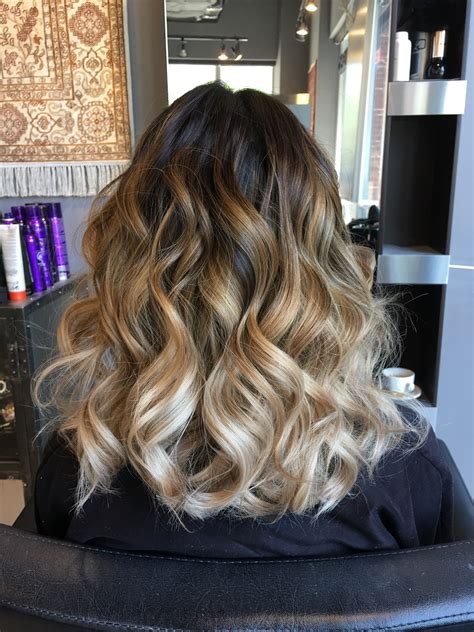
Introduction
Balayage, a French word meaning “to sweep,” is a freehand hair coloring technique that creates natural-looking highlights. Unlike traditional foil highlighting, balayage involves painting color onto the hair’s surface, resulting in a soft, blended effect.
Why Balayage?
- Natural-looking: Balayage mimics the sun-kissed highlights that occur naturally, giving a subtle and flattering result.
- Versatile: It can be customized to suit any hair texture, length, and desired level of contrast.
- Low-maintenance: Balayage grows out seamlessly, eliminating the need for frequent touch-ups.
Types of Balayage
- Traditional Balayage: The most common type, involving a freehand sweeping motion to achieve soft, blended highlights.
- Reverse Balayage: Involves lightening the roots and gradually blending into natural or darker shades towards the ends.
- Foilyage: A combination of balayage and foiling techniques to create more defined highlights.
- Sombré: A subtle variation of balayage, blending hair colors without creating distinct streaks.
Benefits of Balayage
- Enhances hair’s dimension and texture.
- Frames the face and draws attention to the eyes.
- Adds depth and movement to thin hair.
- Covers gray hair without creating a harsh line of demarcation.
Common Mistakes to Avoid
- Overprocessing: Balayage requires precise application to avoid damaging the hair. Overprocessing can lead to dryness and breakage.
- Incorrect Placement: Highlights should be strategically placed to blend seamlessly with the base color. Avoid placing highlights too close to the roots or in a blocky manner.
- Wrong Shade Selection: Balayage highlights should complement the base color and skin tone. Choosing an inappropriate shade can create an unnatural look.
Step-by-Step Approach
- Section Hair: Divide the hair into sections using clips.
- Apply Balayage Paste: Paint the balayage paste onto the surface of the hair, sweeping it in a vertical or horizontal motion.
- Process: The processing time will vary depending on the desired level of lift.
- Tone: After processing, apply a toner to adjust the color and create a consistent look.
- Style: Blow dry and style the hair to enhance the highlights.
Pros and Cons
Pros:
- Natural-looking results
- Low-maintenance
- Enhances hair texture
- Versatile
Cons:
- Can be time-consuming
- Requires skilled stylist
- May not be suitable for all hair types
Cost of Balayage
The cost of balayage can vary depending on factors such as salon location, stylist experience, and hair length and thickness. According to industry estimates, the average cost ranges from:
| Hair Length | Cost Range |
|---|---|
| Short | $100-$250 |
| Medium | $150-$350 |
| Long | $200-$500+ |
Balayage for Different Hair Colors and Textures
Balayage can be tailored to suit various hair colors and textures, including:
- Blonde: Balayage can enhance the natural warmth of blonde hair or create a more sun-kissed look.
- Brunette: Balayage can add depth and dimension to brunette hair, creating a flattering contrast.
- Red: Balayage can brighten up red hair and add warmth to the strands.
- Curly: Balayage can define curls and enhance their volume.
- Straight: Balayage can add movement and texture to straight hair.
Balayage Hair Color Trends
- Babylights Balayage: Creates ultra-fine highlights that mimic the natural highlights of a child’s hair.
- Rooty Balayage: Blends lightened ends with darker roots for a more lived-in look.
- Painted Balayage: Uses a brush to paint on precise highlights for a bold and artistic effect.
- Dimensional Balayage: Involves multiple shades of highlights to create depth and dimension in the hair.
Balayage Inspired Hairstyles
- Beach Waves: Pair balayage with loose, beachy waves to enhance the sun-kissed effect.
- Lob: A long bob haircut with balayage highlights adds volume and movement.
- Pixie Cut: A short, edgy pixie cut can be complemented with balayage highlights to add texture and depth.
- Braids: Balayage can elevate the look of braids, adding a pop of color and dimension to the design.
Conclusion
Balayage hair color is a versatile and flattering technique that can enhance the natural beauty of your hair. Whether you’re looking for subtle highlights or a more dramatic transformation, balayage offers endless possibilities. With the right stylist and proper care, you can achieve the perfect hair color that complements your complexion and style.
